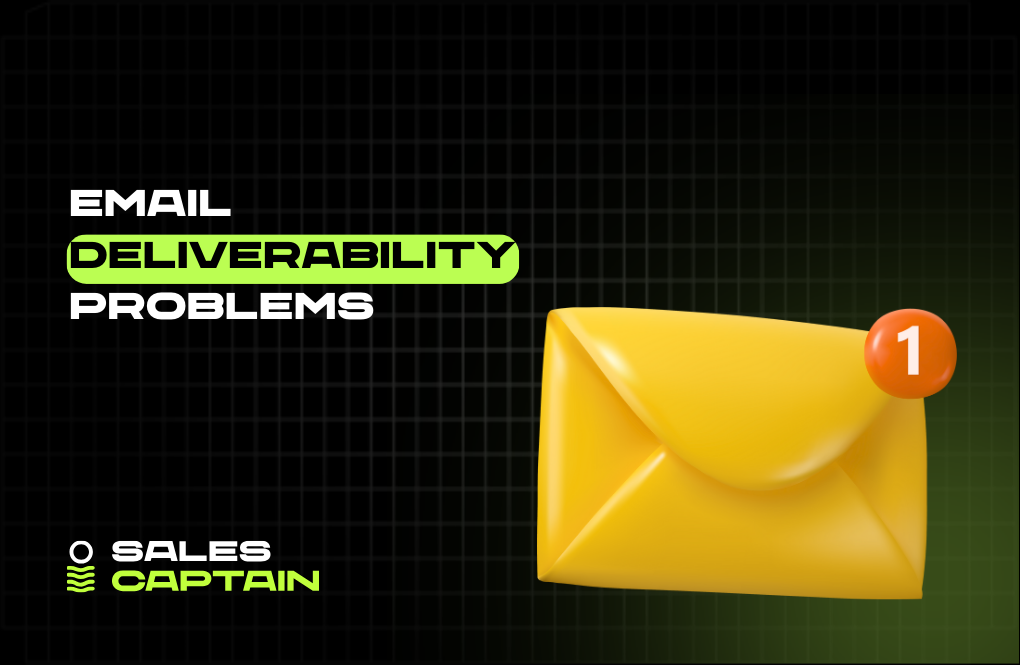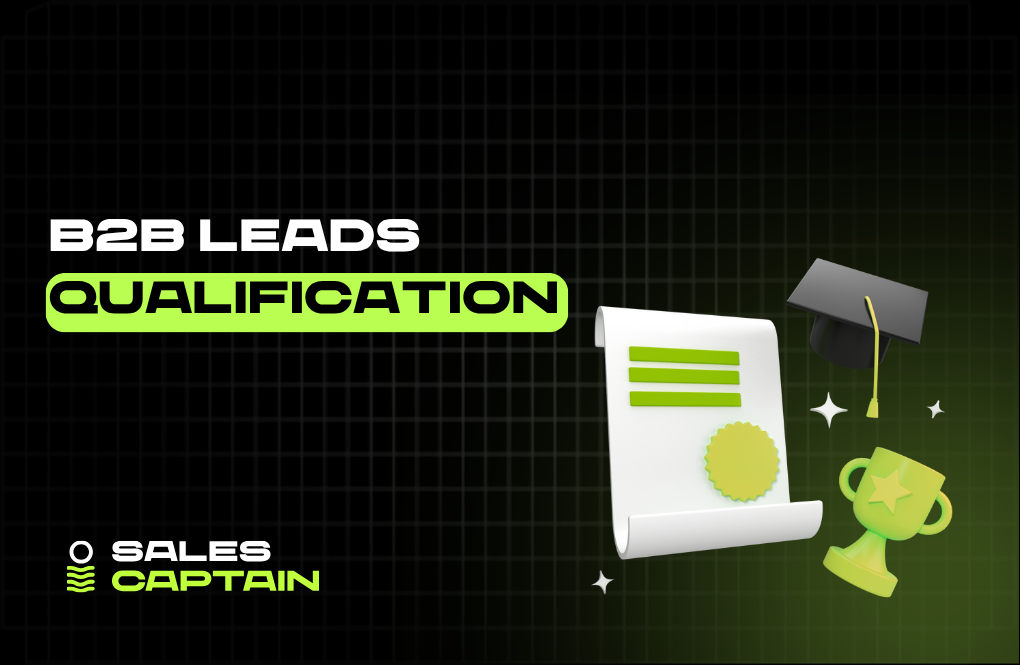

Cold Email Statistics 2025: Response Rates, Timing, Personalization & Deliverability Benchmarks

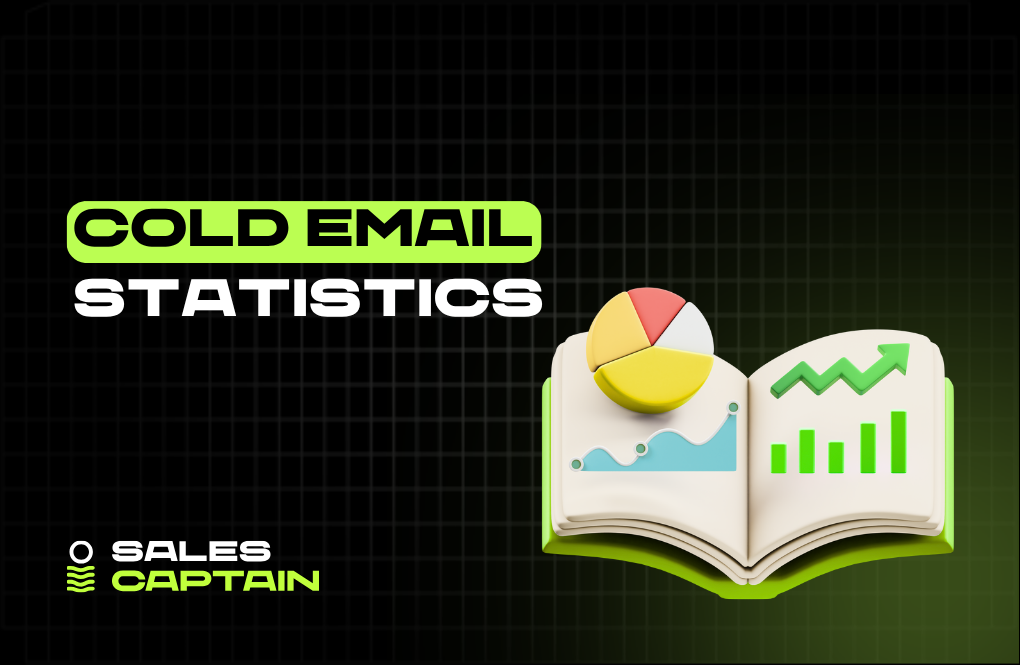
Cold email statistics in 2025 tell a clear story: smarter data, sharper personalization, and rock-solid deliverability now beat brute-force volume. In this guide, we unpack the most important cold email statistics, from average response rates and ideal send windows to bounce-rate thresholds, follow-up cadence, and AI-powered personalization, so you can build sequences that actually create pipeline, not just opens.
What Are the Most Important Cold Email Statistics for 2025?

What Is the Average Cold Email Response Rate?
As of 2025, the average cold email response rate across industries hovers between 7% and 10%. That might sound low, but when you're targeting the right people with quality messaging, it's not unusual to see 20%+.
Here's what skews those numbers:
- Poor targeting leads to low engagement.
- Generic copy triggers spam filters or quick deletes.
- No follow-up means missed opportunities (more on that later).
Response isn’t just about opens. Cold emails are now real demand-gen levers. Think intent-based messaging, technical outreach systems, and signals layered into the approach. That’s why operators using structured outbound workflows outperform SDR-reliant models. It’s a different game now.
How Many Cold Emails Should You Send Daily?
For early-stage teams, 50–100 cold emails per day is manageable and measurable. Scaled teams, with automation and tooling, routinely do 1,000+ per day per domain, splitting volume across lookalike domains and warming protocols.
But it’s not just a numbers game. Volume without infrastructure is noise.
- Are leads clean?
- Are inboxes warmed?
- Are replies routed and tracked?
Outbound is a GTM system now. Sending emails is easy. Getting results takes coordination between processes, data sources, and feedback loops.
Technical operators understand this. High-volume senders aren’t just spamming, they’re orchestrating.
What Bounce Rate Should You Accept?
Healthy cold email campaigns stay under a 2% bounce rate. Anything above 5% risks damaging the domain reputation and triggering vendor blocks. Cold emails don’t need much to land in spam, and bounce rate is one of the first signals inbox providers watch.
Reasons for bounce problems:
- Low-quality data or scraped lists
- No email verification passes
- No automated lead cleaning cycles
Verification tools help, but it starts with sourcing. If you’re pulling leads from outdated sources or guessing emails, you’re already introducing friction.
Bounce rate isn’t just a health metric. It impacts deliverability directly. Fixing this requires inputs at the lead level, not just better copy.
What Is the Impact of Subject Line Personalization?
Subject line personalization can lift open rates by 22–36%, depending on execution.
But it’s not about {{first_name}} anymore. The bar is higher.
Effective personalization today includes:
- Company-specific triggers (“Saw [StartupXYZ] just raised a Series A…”)
- Industry tags or role identifiers (“Quick idea for your growth team”)
- Timely hooks from real signals (“Based on your new product launch…”)
The goal is to look like a 1:1 note, not a mass email with a macro.
Open rates are just the start, though. True personalization compounds across subject, body, and call to action. Done right, it doesn’t just get clicks. It starts conversations.
How Does Timing Affect Cold Email Performance?
What Are the Best Days and Times to Send Cold Emails?
Tuesdays and Thursdays are still king, but not for the reasons people think. It’s not about people being “less busy.” It’s about inbox volume.
Most cold emails get deleted before they’re read. If yours lands when competing messages hit, you lose the slot. Mid-morning (9:30–11:00 am) and post-lunch (1:303:00 pm) tend to perform best. But results shift depending on:
- Your recipient’s role (executives answer late at night, often)
- Your industry (retail behaves differently from SaaS)
- Your sequence structure (first emails vs follow-ups)
Split-testing timing is easy. And necessary. Cold outreach isn’t static; i t’s responsive. What worked last quarter may crater today.
How Does Email Timing Influence Open and Reply Rates?
Open rates spike when emails land at predictable windows, but replies to those require context.
Here’s where timing actually helps:
- Day 1 morning sends = higher visibility → higher open
- End-of-day replies spike in SaaS verticals (catch execs on quiet laptop time)
- Weekends = decent open but low reply; not ideal unless it’s follow-up 4+
The secret isn’t finding the “perfect time.” It’s engineering your sequence to show up at the right moment in the recipient’s workflow. Email is habit-based. Break the scroll pattern at their weakest moment, and you win.
That’s why successful campaigns don’t rely on one send. They architect timing like a real funnel.
How Effective Are Follow-Ups in Cold Email Campaigns?
Do Follow-Ups Significantly Increase Responses?
Short answer: yes. Roughly 60% of replies in cold campaigns come after the first follow-up.
Why? Because people ignore. They scroll past. They forget.
Follow-ups aren’t rude; they’re necessary. But they have to be useful.
Here’s what doesn’t work:
- “Just following up on my previous email…”
Here’s what does:
- Adding a new insight, resource, or angle each time
- Keeping tone low-pressure and curiosity-based
- Changing subject lines and CTA framing
The right follow-up moves you from an unknown sender to a familiar name. That familiarity drives trust. Replies follow.
What Is the Ideal Sequence for Email Follow-Ups?
Most high-performing sequences use 4 to 7 emails over 14–21 days. Aggressive? Sure. But this isn’t about hard selling, it’s about staying visible.
A basic structure looks like this:
- Day 1: Initial outreach
- Day 3: Simple ping with value hook
- Day 6: Case study or social proof angle
- Day 10: Personal story or unique observation
- Day 15+: Breakup email or low-pressure check-in
The goal is momentum. Each email has its own point. Nobody wants to read the same thing seven times.
Set up signal-based triggers, too. If someone opens multiple times or clicks, accelerate. If they ghost you entirely, pause or wait longer.
When Do Follow-Ups Become Counterproductive?
When you start getting marked as spam or your tone shifts into desperation, it’s over.
Good outbound respects the recipient’s time. Here’s when follow-ups start hurting:
- You’re sending daily messages with no new value
- You’re ignoring signals (no opens, multiple unsubscribes)
- You’re guilt-tripping people or weaponizing urgency
Cold email should create a conversation, not pressure a decision.
Tech-enabled teams monitor bounce, spam, and engagement rates across follow-ups. If sequence 5 is tanking deliverability, optimize or cut. Don’t push harder. System-driven outreach needs feedback loops, not just brute force.
How Important Is Email Length and Structure?
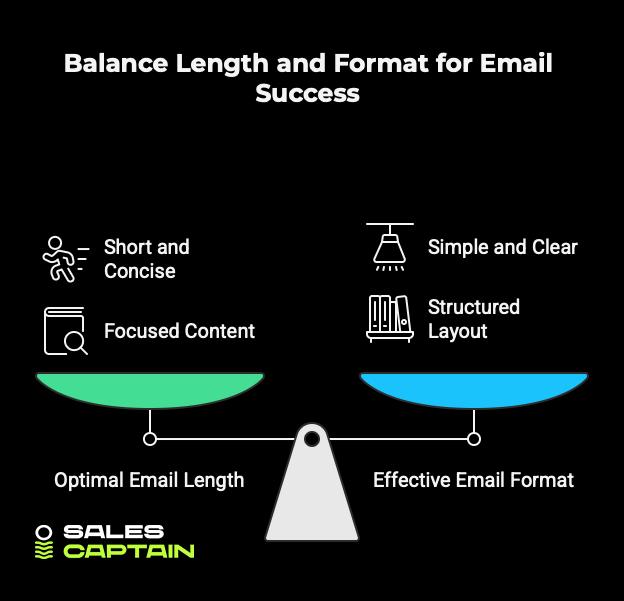
What Is the Optimal Length for Cold Emails?
Rule of thumb? Think two scrolls or fewer on mobile. That’s 50–125 words.
Short wins, but only if what you're saying matters.
Here’s what bloats length:
- Explaining your product in paragraph form
- Credential dumping (We work with X, Y, Z…)
- Asking for too much too early
Instead, go for clarity and speed. One point, one CTA, one reason to reply.
Got multiple value props? Test them across follow-ups. Don’t cram them all into email one.
How Does Email Format Affect Engagement?
How it looks = how people interpret effort level.
- Walls of text = ignored
- Giant logos or HTML styling = promotions tab
- Spaced lines and informal tone = actual human
Best practices:
- 3–4 short paragraphs max
- No attachments on first send
- One CTA, linked cleanly
You’re not writing a brochure. You’re writing a nudge. Format for simplicity, not design awards.
The top-performing cold emails feel like someone typed them up over coffee. That’s the bar.
What Role Does Personalization Play in Response Rates?
How Can You Craft Personalized Cold Emails?
Forget “Hey {FirstName}!” That’s entry-level. Effective personalization uses context, not tokens.
Here’s how you do it well:
- Reference something recent: press, job change, funding
- Connect the message to a role-specific pain
- Make the insight feel unique, not pulled from a feed
Example: “Saw you just launched a PLG motion, curious how onboarding is impacting conversion at scale.”
That lands. Because it implies real research, relevance, and intent.
With tools like Clay, you can pull event signals, LinkedIn titles, recent posts, and even scraped company tech data, all in one workflow. Then generate custom messaging that matches each persona’s world.
Crafting personalization doesn’t scale manually, but with signal-driven workflows, it’s now table stakes.
What Types of Personalization Drive the Best Results?
Role-based. Event-based. Narrative-based.
In order of impact:
- Role-specific messaging (“The pain of a RevOps leader pre-IPO…”)
- Trigger-based timing (“Saw your team raised a Seed round last week…”)
- Micro-narratives (“Heard you’re speaking at SaaStr, grabbed a clip from last year’s panel…”)
The goal is to make it feel un-automated. Even if it’s not.
Personalization isn't about feeling clever. It's about relevance. You're not writing to a lead. You're writing to a person reacting to a very real context in their working life.
Is AI Personalization Effective for Cold Emails?
Yes, with guardrails. AI-generated personalization at scale is powerful. But raw AI is sloppy without signals.
Blind GPT intros? Obvious. They degrade trust.
Effective AI personalization workflows use:
- Accurate enrichment data
- Pre-segmented lead types
- Dynamic tokens tied to real attributes
It’s not magic. It’s orchestration.
This is why operators use tools like Clay. You start with enriched data, pipe it through trained AI blocks, and layer sequences on top. Done right, it feels human. And it scales.
AI isn’t replacing creativity. It’s replacing legwork. And making signal-based personalization the fastest path to results in modern cold email outreach.
What Impact Do Spam Filters Have on Cold Emails?
Spam filters kill deliverability before the recipient ever sees your message. You might have the smartest campaign in the world, but if 40% of your emails land in junk, your sequence is a ghost ship.
Modern spam algorithms are brutal. They've evolved from simple keyword scans to behavioral AI that detects patterns, domain health, and reply history. Cold email needs infrastructure, not just intent.
What Common Mistakes Trigger Spam Filters?
Spam filters don’t just look for “buy now!” or sketchy links. It’s the accumulation of poor signals that gets you flagged.
The usual suspects:
- Sending high volumes too fast from cold domains
- Reusing templates across too many leads
- Overuse of tracking pixels or images
- Link stuffing with too many external URLs
- Lack of SPF, DKIM, and DMARC authentication
- Weird formatting patterns that scream automation
Then there’s data quality. Bad leads = bounced emails = reputation drops. If more than 2% of your emails bounce, you’re already on thin ice.
Spam filtering isn’t just technical. It punishes lazy systems. And most teams don’t even know they’re tripping wires.
How Can You Improve Email Deliverability?
First step? Treat email like infrastructure. Not spray and pray.
Here's what clean infrastructure looks like:
- Warmed domains with proper DNS setup
- Consistent sending behavior (volume ramps, no sudden bursts)
- Verified leads and pre-cleaned lists
- No link overload, 1 max per cold email is ideal
- Text-only emails or minimal HTML (formatted like a real note)
- Positive engagement signals (opens, replies, no spam reports)
Set up inbox monitoring tools. Rotate lookalike domains and diversify your sender pool. If replies are going to one SDR’s Gmail, but sends are coming from several fronts, your funnel breaks.
High-deliverability campaigns don’t just fix mistakes; they feed data into feedback loops. If open rates are dropping, they ask why. Then adjust. Cold outreach isn’t a one-player game anymore; it’s system first, messaging second.
How to Measure Success in Cold Email Campaigns?
Open rates aren’t enough anymore. Modern outbound requires deeper tracking, the kind that fuels sequencing decisions, content pivots, and even list refining.
Cold email isn’t one metric. It’s a flow of micro-signals. Measuring that flow is how you find what’s working and what’s burning time.
What Metrics Should You Track for Cold Emails?
Start by separating lagging indicators from leading ones.
Lagging tells you how things landed:
- Open rate: Subject line and sender trust
- Reply rate: Messaging resonance
- Positive response rate: Real interest vs polite nods
- Booking rate: Actual movement down funnel
Leading indicators show campaign health:
- Deliverability: Open rates fall without it
- Bounce rate: Data source quality
- Spam flag rate: Frequency vs tone balance
- Domain reputation: Most ignored, most dangerous
Then layer in behavior signals:
- Multi-opens
- Link clicks (careful not to overload)
- Reply time trends
- Sequences that spike or stall
Cold outreach is a system now. You tweak based on signal, not guesswork.
How Do You Calculate ROI for Cold Email Campaigns?
Start simple: revenue generated vs. total cost of outreach.
But the total cost isn’t just tool licenses. It’s time + tech + data + ops:
- Tooling (email platforms, enrichment, warming tools)
- List building or agency spend
- Operator or SDR time (if in-house)
- Overhead from bounced domains, spam fallout
Revenue lift should be attribution-based. Cold email rarely closes deals on its own; it sparks them. So tie responses to pipeline movement: SQLs created, calls booked, deals closed.
Example ROI formula:
ROI = (Attributed revenue - total campaign cost) ÷ campaign cost
Track it per sequence. Per persona. Even per the subject line. Tiny lifts compound.
This is where cold outreach agencies like SalesCaptain show value; they’re system builders, not just email writers. Real ROI comes from orchestrated outreach that stacks wins across the funnel.
What Are the Current Trends in Cold Emailing?
Cold email isn’t dead. It’s evolving fast and becoming more technical by the day.
The trends now? Data-rich signals, AI-assisted everything, and a sharp move away from human SDRs doing manual grunt work.
How Is AI Shaping Cold Email Strategies?
AI isn't just another writing assistant; it’s the new creative ops layer in outbound.
The old way:
- SDRs writing 50 one-off intros
- Guessing who to email and when
Now:
- AI analyzes triggers and roles
- Crafts multiple message variants on the fly
- Adjusts tone, format, and even timing
- Connects to signal inputs and enriches leads dynamically
The shift? Strategy is still human. Execution is automated.
Operators aren't choosing between "scale or personalize" anymore. They're designing systems that do both.
When integrated with data-enrichment tools and signal processors, AI becomes the production engine. Creative. Adaptive. Fast. Tools like Clay push this further by tying lead data, AI-written messaging, and outreach sequencing into one technical loop.
We're not automating cold email. We’re automating relevance at scale.
What Are the Rising Best Practices for Engagement?
Engagement used to be about catchy intros. Now it’s structural:
- First lines that reflect a real-world trigger
- Subject lines that reference time, urgency, or insight
- One sharp idea per message
- Dynamic CTAs that shift by persona (not always “book a call”)
Timing also matters more:
- Use behavioral send windows (late night for execs, mid-AM for mid-market)
- Sequences spaced to build curiosity, not pressure
- Follow-ups that introduce NEW context, never just a nudge
And tone? The trend is toward low-stakes, conversational, almost “just checking in” dialogue. Formal copy screams mass blast.
The best emails now feel like they were typed from a phone, quickly, but thoughtfully. That’s how modern leads like to engage.
How Do Cold Emails Compare with Other Outreach Channels?
Cold email doesn’t exist in a vacuum. It competes for attention across LinkedIn, ads, social DMs, and good old-fashioned dials.
But it still wins, especially in B2B. Why? Because it’s focused, efficient, and permissionless when used right.
How Does Cold Emailing Compare to LinkedIn Messaging?
LinkedIn is great for awareness. But it’s rarely built for conversion.
The comparison:
- Cold email gets past the feed clutter. LinkedIn messages compete with recruiting spam and “content-as-DMs.”
- LinkedIn throttles before scale. Cold email, done right, still scales to thousands per week.
- Email provides more room for positioning. LinkedIn limits formatting, links, and message length.
LinkedIn works best as a warm-layered touch, post-email. Email still owns first contact when the goal is pipeline, not just connection.
Message first, connect later. That’s the rhythm most high-performing GTM systems follow.
What Advantages Does Cold Emailing Have Over Social Media?
Social media is top-of-funnel energy. Cold email is bottom-funnel pressure.
Here’s why cold email usually converts better:
- Intent: Email gets read in the workplace mindset. Social? Passive scroll.
- Structure: Cold email allows structured sequences. Social, by nature, is reactive and scattered.
- Measurability: Email has clear attribution paths. Social touchpoints often get lost in the noise.
- Privacy and targeting: You don’t need a public presence to email someone. You do on social.
That’s why outbound operators still prioritize cold email first. Social is additive. Email is foundational.
And for technical buyers or execs avoiding public noise, email remains the most efficient private entry point.
What Industries See the Best Results from Cold Emailing?
Not every industry responds the same to cold outreach. Some gatekeepers are hard. Others are wide open.
Success rates shift by persona, buying motion, and problem awareness. The sweet spot? Sectors with high-ticket, low-frequency purchases led by identifiable buyers.
Which Sectors Are Most Responsive to Cold Emails?
Some of the most responsive industries include:
- SaaS and Software: Tech-native buyers, used to async pitches
- Professional Services: Agencies, consultants, service firms, all live in email
- Real Estate and PropTech: Time-sensitive decisions and low email resistance
- Fintech: Emerging players hunting for edge, open to new tech
- Recruiting/HRTech: Always hiring, always evaluating tools
Common thread? These fields rely on digital operating models where inboxes are still primary decision surfaces.
Plus, sectors overflowing with point solutions (like RevOps, HR, or DevTools) tend to be more email-oriented. Buyers expect to be pitched. Which means with the right message, they open.
What Are the Top Industries for Cold Email Success?
It’s not just about reply rate; it’s reply quality.
Industries that show both high engagement and positive conversion tend to be:
- B2B SaaS selling into mid-market tech and services orgs
- Martech tools reaching growth teams and content operators
- DevOps platforms targeting engineering directors or CTOs
- HR platforms pitching to People Ops at fast-scaling startups
Cold email thrives when buyers have autonomy. SMB and mid-market operators respond faster than enterprise hierarchies. Shorter sales cycles, more feedback loops, and easier A/B testing.
Outbound agencies like SalesCaptain specialize in tailoring cold email systems to these high-reaction sectors. It’s not about volume; it’s about matching GTM architecture to industry responsiveness.
When the fit’s right? Replies turn into revenue. Faster.
How to Build Effective Cold Email Lists?
A high-performing cold email list doesn’t start with names. It starts with intent. Relevance. Structure.
Most campaigns fail before the first send because the list is a random database, not a strategic input. Building effective lists means building for the GTM motion, not just email volume.
What Are the Best Practices for Segmentation?
Segmentation needs to go beyond “job title.” If your list is just “CMOs at SaaS companies,” you’ve already lost the nuance.
Here’s how smart segmentation works:
- By role seniority: Messaging to a Head of Marketing vs. a VP vs. a Coordinator isn’t the same. Neither are the problems they care about.
- By funding stage: A pre-seed startup behaves differently from a Series C company. Their priorities? Night and day.
- By recent activity: Look for signals, new hires, recent press, job changes, and tech adoption; these define context far more than firmographics.
- By tech stack: Segment based on what tools they’re already using. Selling analytics to a HubSpot user requires different framing than selling to a Salesforce shop.
Segmentation is how you win early relevance. It narrows focus. It delivers specificity at scale.
And with the rise of AI-powered list-building platforms, segmentation isn’t just about slicing, it's about enriching, too.
How Can You Create Targeted Email Lists?
You don’t find great lists. You build them. From scratch. Using real signals, filters, and tooling.
Here’s what modern list creation looks like:
- Start with the end goal. What pain points do you solve? Who feels them most? That defines your ICP, not just the buyer, but the situation.
- Use enriched filters, not raw exports. Title and company size aren’t enough. Layer in tech usage, revenue bands, hiring signals, content engagement, or social activity.
- Pull from multiple sources: LinkedIn, job boards, press releases, Crunchbase funding rounds, tech directories. Signal overlap = high intent.
- Always verify email addresses before outreach to cut bounce risk. A 5% bounce rate can destroy your entire campaign’s deliverability.
And here’s the cheat code: If your team has technical operators, build workflows. Not CSVs.
Tools like Clay let you ingest job board feeds, enrich leads with LinkedIn and tech stack data, and auto-generate account lists with verified contact info, all inside a few flows. And that link gives you 3,000 free credits to try it.
It’s speed without the spray. Precision at scale.
Cold email isn’t about mass. It’s about a match. Targeted lists make sure every email has a shot at relevance, and that’s the real game.
FAQs
Depends. Cold emailing lives in a legal gray zone depending on where you're sending from and where your recipient lives.
Here’s the breakdown:
- In the U.S., the CAN-SPAM Act allows B2B cold email if you include a physical address, provide an easy opt-out, and stay honest. It's permissionless, but not lawless.
- In the EU and UK, GDPR and PECR tighten the rules. Consent is a bigger deal, especially for B2C contacts. For B2B? It’s allowed if there’s a “legitimate interest”, but still dicey without a strong legal footing.
- Canada’s CASL is stricter. You need implied or express consent, especially with personal inboxes. Not following it = hefty fines.
Rule of thumb? Always:
- Email business addresses, not personal ones.
- Include a clear opt-out or unsubscribe option.
- Avoid deceptive language or harvesting without consent.
And when in doubt, consult a local privacy expert. Cold outreach is high-leverage, but it shouldn't put you in legal risk.
Unsubscribes spike when emails feel lazy, irrelevant, or pushy. If you treat the inbox like a billboard, people will opt out fast.
Here’s what triggers unsubscribes:
- Generic intros: “Dear Sir/Madam,” or worse, “Hi [FirstName]”
- Obvious mass-send copy: Blocks of templated text, highlight-over-paste mistakes, fake urgency
- Irrelevant offers: If you're pitching a PLG tool to a construction exec, you deserve the unsubscribe
- Multiple asks in one email: Choose one CTA and stick to it
- Zero credibility: No context, no clue who you are or why you're messaging them
That said, don’t fear unsubscribes. Their feedback. Clean ones. It’s spam reports that sting.
Unsubscribes tell you your message didn’t land. Spam tells the algorithm you're a threat. Focus on the line between automation and personalization, that's where trust is built.
Yes, but it's risky, and context matters.
Cold email thrives in B2B because job titles, business addresses, and professional pain points give it structure. B2C? Personal data laws and consumer privacy make it treacherous.
If you’re emailing B2C, ask:
- Do I have explicit consent or opt-in behavior?
- Am I emailing a personal Gmail or a work-linked contact?
- Is my offer time-sensitive and value-led, not a mass consumer promo?
Where it can work:
- High-ticket, high-consideration verticals (coaching, investing, real estate, premium services)
- Hyper-local outreach (e.g., boutique services in a certain zip code)
- Warm-ish data (past customers, referrers, opt-in adjacent)
But tread lightly. Cold email for B2C is a narrow road. One misstep, and you’re in the spam folder, or worse, facing compliance heat.
Stick to outbound-friendly channels unless you're equipped to handle the nuances of consumer privacy laws.
RELATED ARTICLES
Lorem ipsum dolor sit amet, consectetuer adipiscing elit, sed diam nonummy nibh euismod tincidunt ut laoreet dolore magna aliquam erat volutpat.

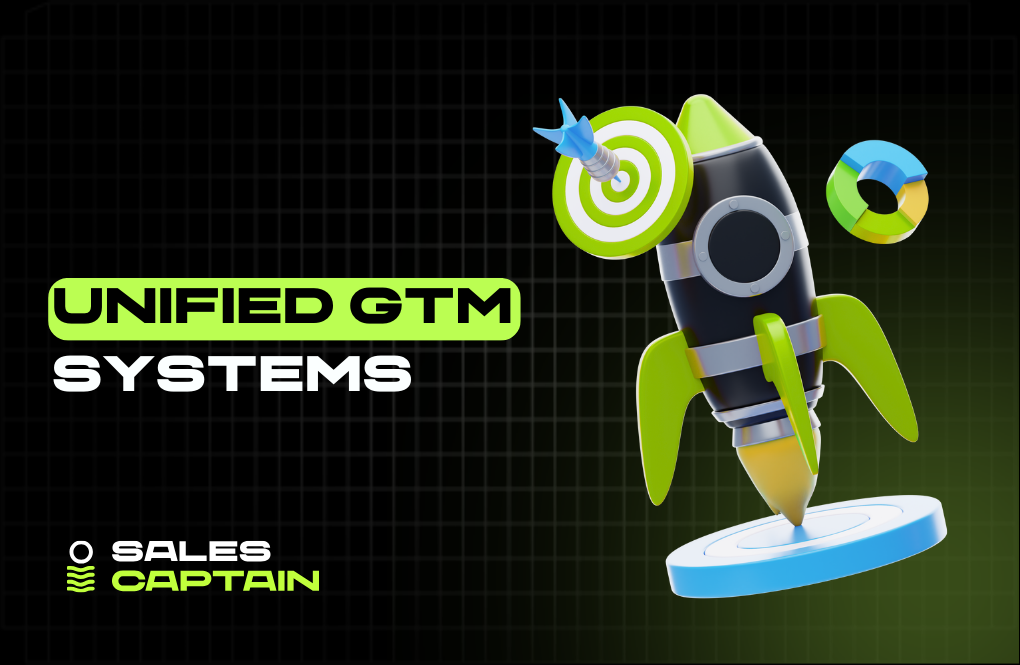


.jpg)

